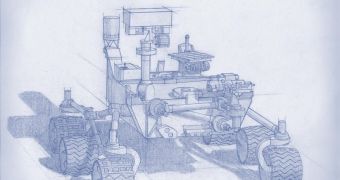NASA is currently planning to send a new rover to the Red Planet by 2020, so it has recently called for proposals on the scientific instruments exploration technologies that would go on the spacecraft.
What most scientists appear to agree on is that the future explorations platform should use the expertise accumulated while developing the Mars Science Laboratory rover Curiosity.
The robot launched from the Cape Canaveral Air Force Station, in Florida, on November 26, 2011, and promptly became the first nuclear-powered, 1-ton rover to explore Mars. Due to its ample power supply, the vehicle carries numerous instruments and cameras.
This diversity of capabilities is what NASA should aim for for its 2020 mission as well, experts say. This is why many of the 58 scientific proposals the agency has received to date are centered on a scenario where the platform of the to-be-built rover is similar to that of Curiosity.
It is interesting to note here that NASA has thus far received more than twice the usual amount of proposals for scientific instruments to go on this mission. This can be interpreted as a clear sign that more and more people are becoming interested in exploring our neighboring world.
At this point, officials are conducting a review of the proposals, in an attempt to determine the best possible combination of science and exploration technologies. The exact focus of the 2020 mission has not yet been established, so it could turn out to be geological, or biological, or another option entirely.
“Proposal writing for science missions is extremely difficult and time consuming. We truly appreciate this overwhelming response by the worldwide science and technical community and are humbled by the support and enthusiasm for this unique mission,” John Grunsfeld said in a press release yesterday.
“We fully expect to be able to select an instrument suite that will return exciting science and advance space exploration at Mars,” adds the expert, who holds an appointment as the NASA associate administrator for science, at the agency's Headquarters, in Washington DC.
The call for proposals for the 2020 mission was issued in September 2013 and closed January 15, 2014. A total of 41 proposals came from American academia, research facilities and government agencies, while 17 proposals were submitted by NASA's international partners.
“NASA robotic missions are pioneering a path for human exploration of Mars in the 2030s,” explained the NASA associate administrator for human exploration and operations in Washington, William Gerstenmaier.
“The Mars 2020 rover mission presents new opportunities to learn how future human explorers could use natural resources available on the surface of the Red Planet. An ability to live off the land could reduce costs and engineering challenges posed by Mars exploration,” he concluded.

 14 DAY TRIAL //
14 DAY TRIAL //